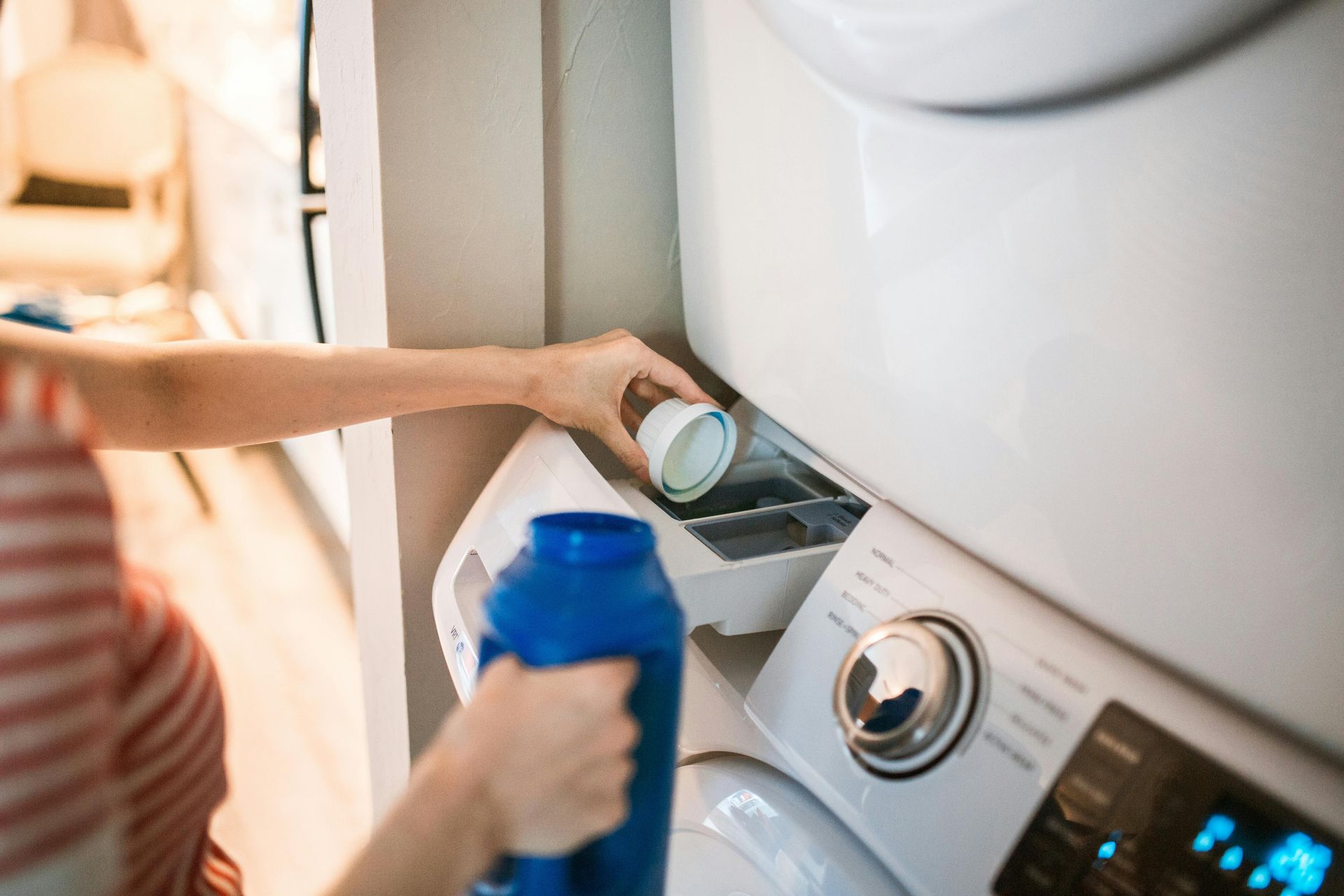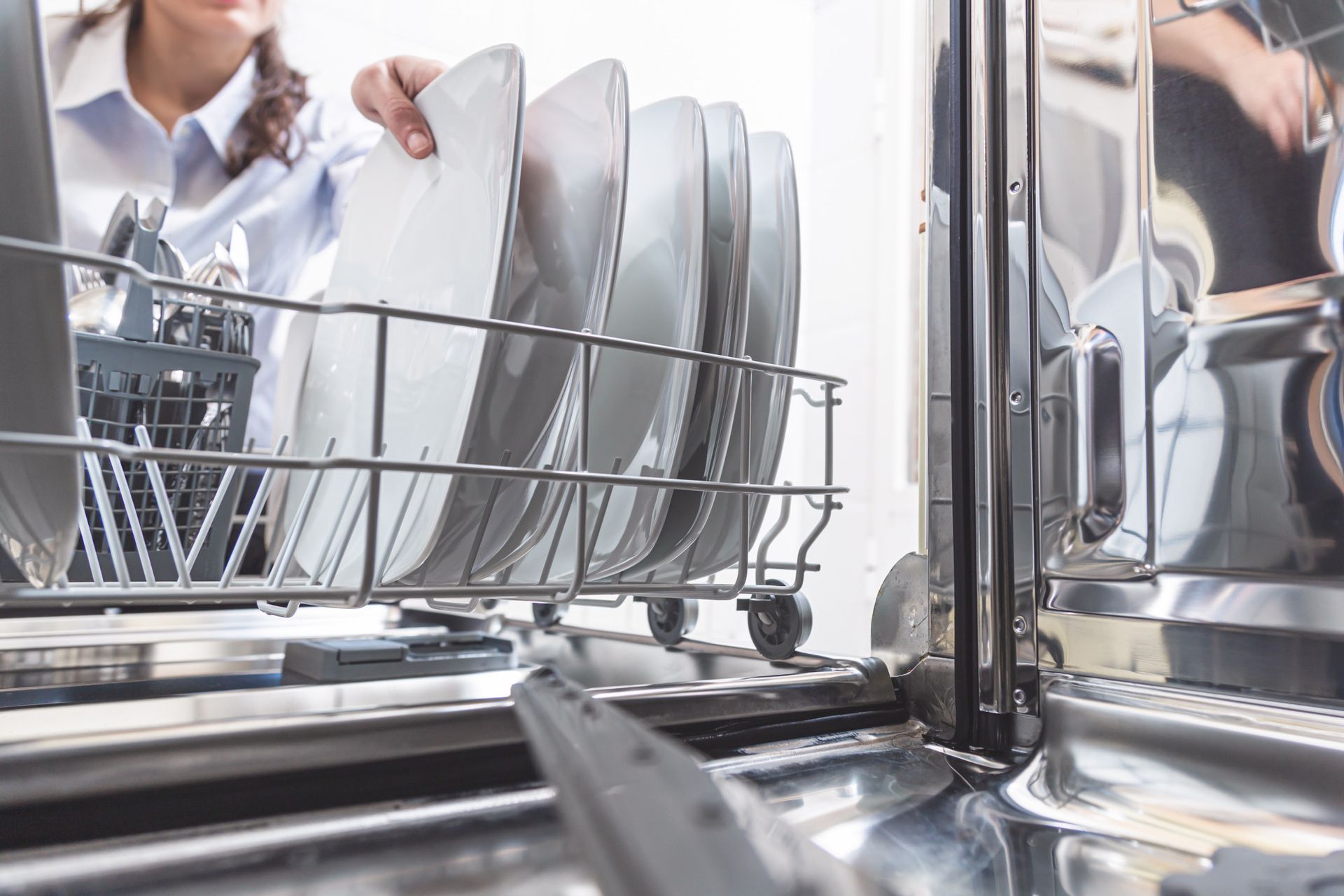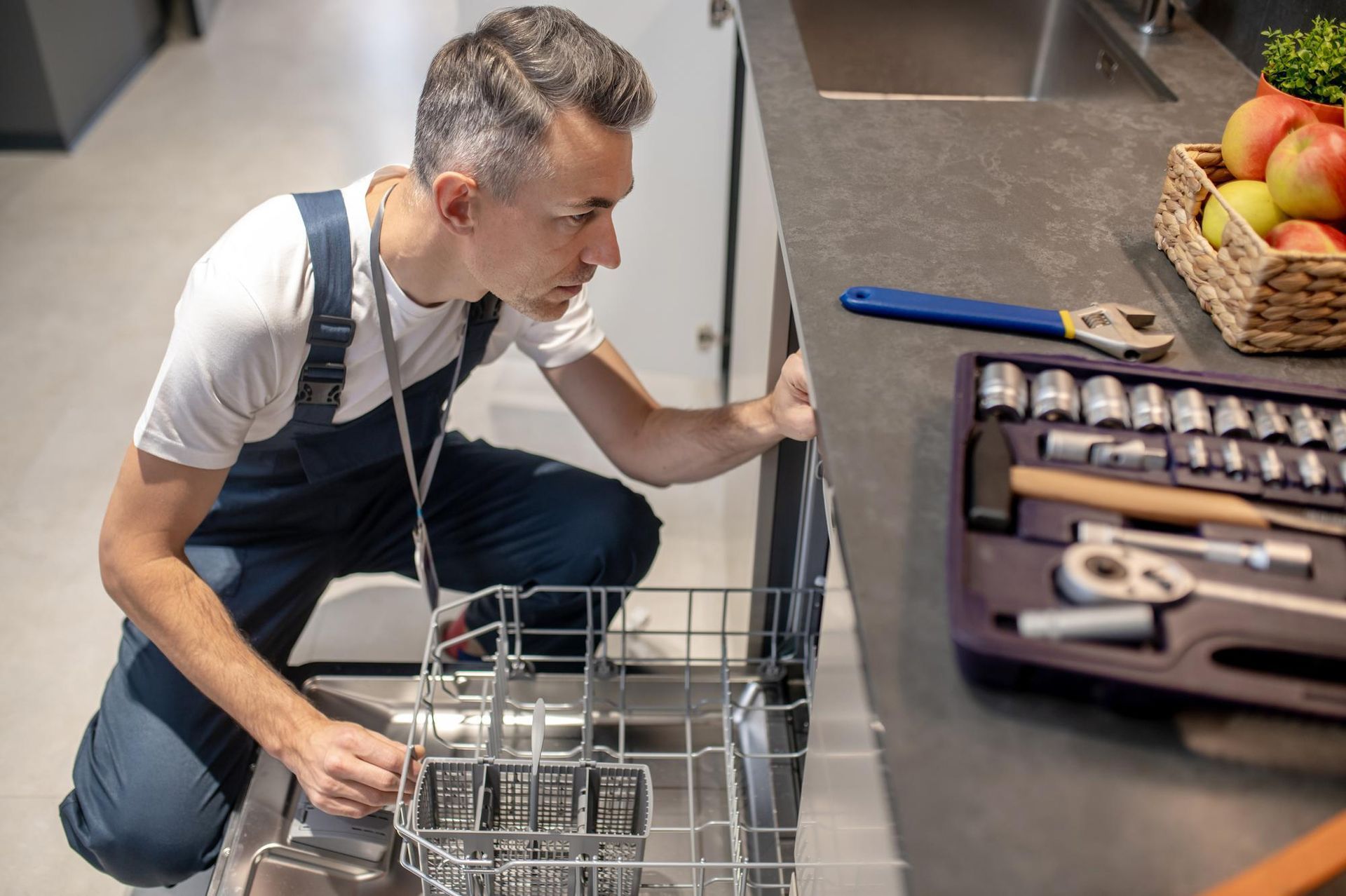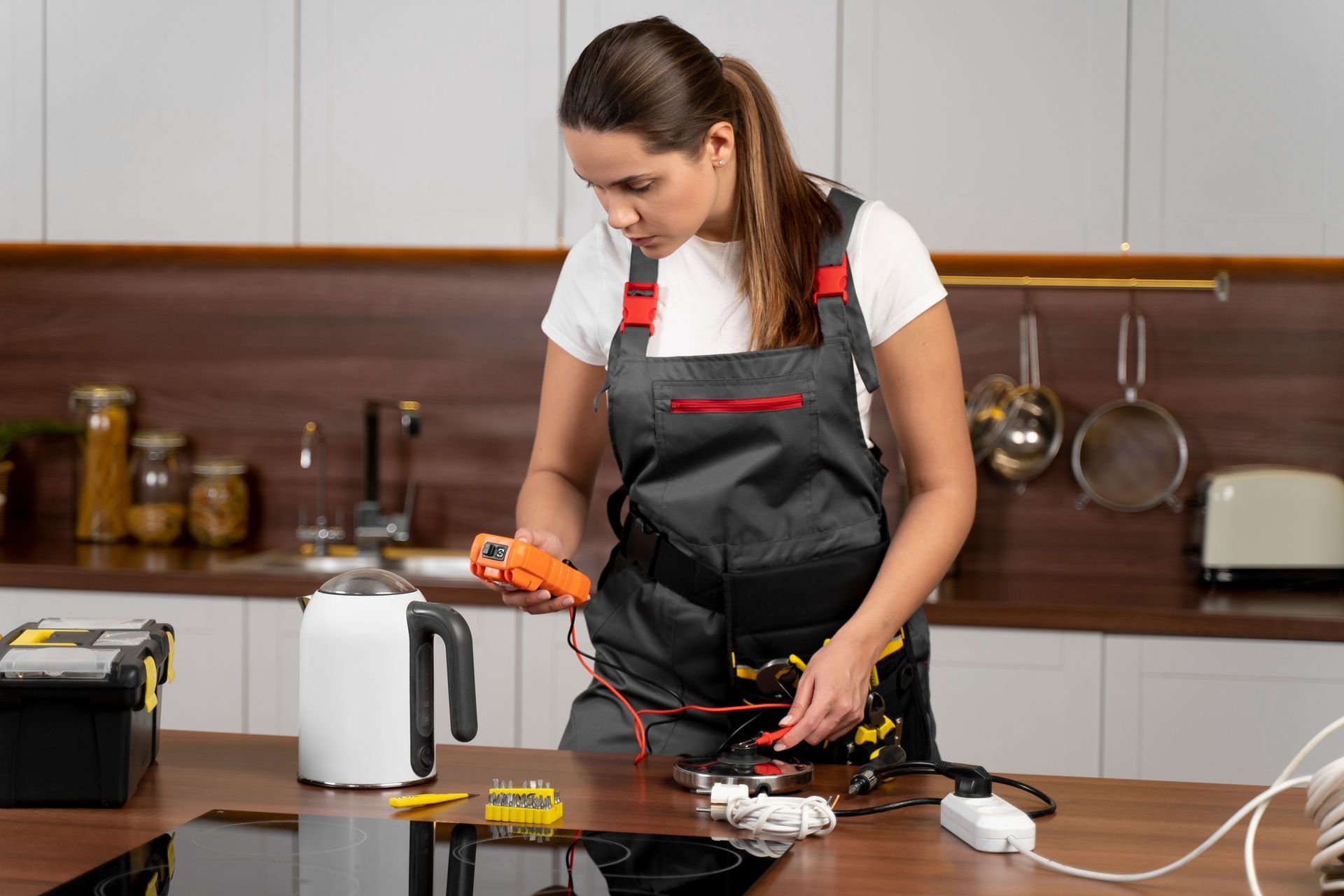Why Your Washing Machine Won’t Start & How to Repair It

It’s super frustrating when you load up your washing machine with dirty clothes, hit the start button, and… absolutely nothing happens. It’s quiet—no motor humming, no drum spinning—just pure silence. When your washing machine won't start, it can really mess up your day and leave you searching for a fix.
But wait! Hold on a second before you rush to Google and search for “appliance repair near me.” Just take a deep breath. Often, the problem is something straightforward that you can figure out on your own.
If your washing machine isn't working, it could be due to a tripped circuit breaker or maybe a faulty start relay. There are a few reasons it might be acting up. In this blog, we’re going to chat about some common causes and solutions. This way, you can either tackle the problem on your own or figure out when it’s best to bring in the experts.
1. Check the Power Supply
You know, one thing that often gets overlooked when a washing machine won't start is just a basic power issue. Before we jump into the tricky repairs, let’s cover the basics first.
Is the Washer Plugged In?
Though it seems obvious, occasionally the power cord might be accidentally unplugged—especially if your washing machine is vibrating during the spin cycle. Make sure it’s plugged in tightly to a working outlet.
Check the Circuit Breaker
If your washer still isn't starting, go ahead and take a look at your electrical panel to check the circuit breaker. Washing machines can really draw a lot of power, so if there was a surge, it’s possible that the breaker could have tripped. If you notice that it’s turned off, just switch it back on and give the washer another go.
Test the Outlet
Still hoping for some luck? To see whether another small appliance—such as a hairdryer—fits in that same socket, try plugging it in. Should it not be operating, the outlet may be the cause; hence, you might want to give an electrician a call.
2. Inspect the Start Relay & Thermal Fuse
So, your washing machine is getting power, but it just won’t kick on, huh? It sounds as though you might have a blown thermal fuse or a damaged start relay. Two little but really crucial components control the power to the motor of your washing machine. Whether you have experience with a few appliance repairs already or you are just starting out, let's streamline this so everyone can clearly understand.
What is a Start Relay?
Think of the start relay as your washer's "on-switch," for the drive motor. The relay thus kicks in and drives the motor to start its cycle when you hit start. Should the relay fail, the motor will not get the required electrical signal and your washing machine will simply remain silent.
How to Check the Start Relay (Even if You’ve Never Done This Before!)
Step 1: Make sure to unplug the washer – it's super important to turn off the power before you dive into any electrical work.
Step 2: It's typically located close to the drive motor and looks like a small box.
Step 3: To check for continuity, grab your multimeter and set it to continuity mode. Then, just touch the probes to the relay’s terminals.
Step 4: Not reading? Looks like it’s time for replacement
Swapping out a start relay is typically pretty easy and won't break the bank. If your washer isn't starting but everything else looks good, this might just be the solution you're looking for.
What Does the Thermal Fuse Do?
The thermal fuse acts like a bodyguard for your washing machine. Its role is to stop overheating by shutting off power if things get too hot. If your washer just up and quit on you, a blown thermal fuse might be the reason behind it.
How to Test the Thermal Fuse
Step 1: Make sure to unplug the washer – safety comes first, okay?
Step 2: Check out the fuse – you can typically find it in the control panel or close to the motor.
Step 3: Give it a try with a multimeter – no continuity? Looks like the fuse has blown and it’s time for a replacement.
A blown thermal fuse usually points to another problem, such as an
overheating motor or blocked vents. If you swap it out and it blows again, it might be a good idea to look for any underlying issues.
The start relay and thermal fuse are really important for getting your washer going. If your machine is powered on but just won't start, checking these parts might lead you to a simple solution!
3. Examine the Drive Belt & Drive Motor
If your washing machine isn’t starting, it might be due to an issue with the drive belt or drive motor—two key parts that need to work together to keep your washer going.
The Drive Belt:
The Connection to the Drum
The drive belt is kind of like the chain on a bike; it links the motor to the drum, causing it to spin. If your washer is turning on but the drum isn’t moving, it could be because the belt is loose, worn out, or even broken.
How to Check the Drive Belt
Step 1:
Make sure to unplug the washer first – it's a good idea to turn off the power before you take a look at the internal parts.
Step 2:
To get to the belt, you'll need to take off the back panel or the bottom panel, depending on your washer model.
Step 3: Check for any damage – Is the belt looking frayed, cracked, or maybe even off the pulleys entirely? In that case, it should be replaced.
Step 4:
If you need to, go ahead and replace it. If the belt is loose or broken, just loop a new one around the pulleys and give it a good tighten.
If your washer isn't starting right, a
damaged drive belt is often the culprit, but the good news is that it's a pretty simple fix!
The Drive Motor: The Power Behind the Spin
The drive motor is like the heart of your washing machine; it powers the drum and makes sure everything runs smoothly. If the motor's not working right, your washer might not start at all, could hum without actually doing anything, or might just stop in the middle of a cycle.
Signs of a Failing Drive Motor:
- The washer isn't starting, even though it's getting power.
- You notice a humming or buzzing sound, but nothing seems to happen.
- The drum just won't spin, or the machine stops working in the middle of a cycle.
How to Diagnose a Drive Motor Issue (Step-by-Step Guide!)
1️⃣ Listen for Clues – If you hear a humming noise but nothing's moving, it could mean the motor is jammed or not working right.
2️⃣
Check for Overheating –If your washer is only running for a little while before it shuts off, it could be that the motor is getting too hot. Just let it cool down a bit and give it another shot.
3️⃣
Test the Motor with a Multimeter
–
• Make sure to unplug the washer for safety.
• Find the motor, which is typically located at the bottom of the machine, close to the drum.
• Grab your multimeter and switch it to continuity mode, then check the motor’s electrical terminals.
• Not reading? Looks like the motor is acting up and will need to be replaced.
The drive belt and drive motor are super important for getting your washer up and running. If either of these is acting up, your machine might not start right. But figuring out what's wrong and fixing it could help you avoid a costly replacement!
4. Check the Pressure Switch
If your washing machine isn't starting, it might be the pressure switch that's causing the issue. This little part is highly significant as it works like a sensor, letting your washer know when there's enough water in the drum to start a cycle. If there’s something wrong, your machine might get confused about how much water it has, which could stop it from working properly.
What Does the Pressure Switch Do?
Consider the pressure switch like the water level sensor in your washer. It detects the air pressure in a little hose that's hooked up to the drum. In other words, when the water fills up the machine, it pushes air through the hose, which then triggers the switch. The washer uses this to figure out when to kick off, stop filling up, or drain the water.
So, if the switch isn't working right or the hose gets blocked, the washer might not get the signal it needs, which could make it not want to start.
Signs of a Faulty Pressure Switch
• The washer won't start, even though the door is closed and locked.
• The machine either gets filled with way too much water or not enough at all.
• It gets stuck halfway through and just won’t move on to the next step.
• You're hearing some clicking sounds, but it seems like nothing's going on.
How to Check the Pressure Switch
Step 1: Locate the Pressure Switch
You'll usually find the pressure switch tucked away inside the control panel at the top of the washing machine. It’s hooked up to a little rubber or plastic hose that goes to the drum.
Step 2: Inspect the Hose for Clogs
• Gently take the hose off the pressure switch.
• Just blow into the hose—if the air doesn’t flow through easily, it could be blocked by dirt or detergent buildup.
• If it's blocked, just give it a good clean with some warm water or use compressed air to clear it out.
Step 3:
Test the Pressure Switch with a Multimeter
If the hose looks good but the washer still won't kick on, the switch could be the problem.
• Grab your multimeter and switch it to continuity mode—it’s the setting that helps you check electrical components.
• Just touch the probes to the terminals of the pressure switch.
• If you’re not getting any continuity on the multimeter, that means the switch is broken and it’s time for a replacement.
Swapping out a
pressure switch is typically a fast and budget-friendly solution. If you're up for some DIY repairs, you can totally switch it out yourself. If not, you can always have an
appliance repair pro handle it for you!
5. When to Call an Appliance Repair Professional
Sometimes, no matter how many troubleshooting steps you try, your washing machine just won't play nice. DIY fixes can definitely help with a lot of common problems, but there are moments when it’s just better (and safer) to bring in a pro.
Here’s when you should grab your phone:
Persistent Electrical Issues –If your washer keeps tripping the circuit breaker, won’t power on even though the outlet works, or has any other electrical hiccups, it’s a good idea to call in a pro to figure out what’s going on and fix it safely.
A Faulty Drive Motor
– Your washer’s drum gets its power from the drive motor. If it’s burned out or making weird noises, it’s probably a good idea to let an expert handle the replacement since it can be a tricky job.
Control Board Malfunctions – The control board is like the brain of your washing machine. If it’s acting up—like having weird cycles, buttons that won’t respond, or just not turning on—you’ll want to get a good technician to take a look and fix or swap it out.
You’ve Tried Everything, and It Still Won’t Start –If you've gone through the power cord, start relay, thermal fuse, drive belt, pressure switch, and motor and your washer still isn't starting, it might be time to call in a professional.
Don’t Let a Broken Washer Ruin Your Day!
If your washing machine isn't starting, it can definitely be frustrating, but often the fix is easier than you might expect. If you take a look at the power cord, circuit breaker, start relay, thermal fuse, drive belt, drive motor, and pressure switch, you can figure out and fix some common problems.
If the issue is more than just a quick fix, feel free to reach out to the experts for washing machine repair. For more than 15 years,
Colorado Springs Appliance Repair has been here for the folks in Colorado Springs and Monument, CO, making sure their appliances are up and running in no time.
Next time your washer won't start, just take a deep breath, follow these troubleshooting steps, and keep in mind—help is only a phone call away!



